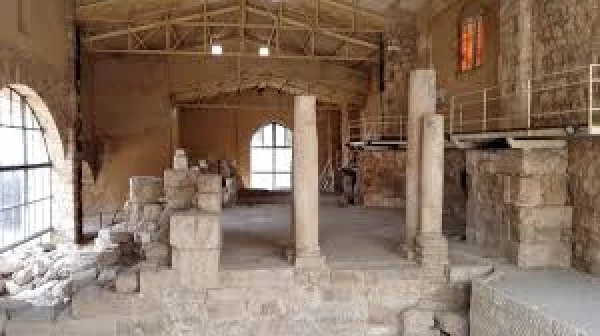
Madaba Archaeological Museum
Madaba Archaeological Museum
The Madaba Archaeological Museum is situated in Madaba city, close to the Church of John, and is one of the attractions of the city despite more reputed sites, as most of its interiors are decorated with mosaics from the Byzantine period between the fifth and the eighth century. Supporters provide support in several ways. The rooms contain objects from numerous excavated locations in the region, which include various important periods of history such as Iron Age, Roman, Byzantine and Umayyad.
This museum is rich in Moabite and Ammonite artifacts. The ticket to this museum which is included in the Madaba combination ticket costs JOD 3 and includes Madaba Archaeological Park and the Church of the Apostles. The new Madaba Archaeological Museum is characterized by its innovative design, which houses a collection of archaeological artifacts dating back to different historical periods, including the Roman, Byzantine and Islamic periods, which were found in several archaeological areas in Madaba Governorate, and serves as an umbrella that serves scholars, visitors and members of the local community to take an interest in the archaeological artifacts that the site has hosted from the Iron Age to the present day.
Founded in 1979, the museum consists of a group of old and modern houses that have been owned by the Department of Antiquities since 1966, following the discovery of a number of mosaic floors in them, which was the nucleus of the Madaba Museum. The museum consists of two parts: The Archaeology Museum, the Folk Museum and the Traditional House of Madaba.
The archaeological collections in the museum are arranged in a chronological order as well as that of the archaeological sites located in Madaba and its surrounding areas. The museum is made up of two exhibition halls that showcase collections spanning from the bronze age to the Islamic period.
The New Madaba Archaeological Museum is one of the projects funded by the USAID-funded Sustaining Cultural Heritage with Local Communities project, implemented by the American Center for Oriental Research (ACOR), which takes the unique approach of considering the local community as the cornerstone in preserving, managing and promoting cultural heritage resources in the right way.
Dr. Douglas Clark from La Sierra University, Dr. Susan Richard from Gannon University, Dr. Andrea Pulcrow from the University of Perugia, Dr. Marta Andrea from La Sapienza University, as well as a project coordinator of the Department of Public Antiquities – as a Director of the Madaba Governorate Antiquities Office, Bassem Mahameed.














